This Guide gives basic safety principles for the safe storage, use, transportation and disposal of portable batteries, though it mainly considers the safety of lithium-ion (Li-ion) rechargeable batteries which, due to their high energy density, have become the most commonly used type in many locations and applications throughout the 91�ȱ�.
Those who want more detailed safety information, including of other battery types, should consult the information given via the links provided.
Legal/91�ȱ� Requirements
• General legal requirement to ensure all electrical equipment provided is suitable for use, maintained in a suitable condition and properly used.
• IATA has imposed strict legal requirements for the transportation of certain battery types on all commercial passenger aircraft.
What do they look like ?
There are four basic styles of Lithium-ion rechargeable batteries: cylindrical, button, prismatic, and pouch cells. The cylindrical and button formats are inherently more robust than flat-format prismatic and pouch cells due to the structural properties of their shaped metal casings.
Prismatic and pouch cells are made up of many flat positive and negative electrodes sandwiched together. There are greater possibilities for deformation, short circuit, and irregularity with this arrangement when compared with cylindrical or button cells, that can lead to thermal runaway conditions. Pouch cells have outer surfaces made from flexible materials (e.g. aluminium-plastic composite film) and have the least mechanical resistance of these formats.
What are the hazards?
- Fire / explosion – can result if the terminals are short-circuited, the battery is incorrectly charged or damaged in some way as to create internal short-circuits (leading to ‘thermal runaway’). Also, some battery contents are also corrosive / toxic.
- Thermal runaway typically develops through the following events:
- Temperature increase
- Venting/gassing off of flammable/toxic electrolyte vapours
- Flare
- Steady burn
- Flash fireball
- Explosion
- Ways that thermal runaway can start in batteries are:
- Damage to the battery
- Manufacturing defects
- Overcharging
- Over-discharging
- Short circuiting
- Water ingress
- Incorrect use of charger
- Poor quality battery – cell faults
- Poor condition of battery – cell faults
- Age of battery
Should a fire occur in a Li-ion battery, without putting yourself at risk of injury, you should quickly place the battery / equipment on a non-combustible surface and away from other materials which could catch fire. Foam, wet chemical or carbon dioxide extinguishers can be used and, in extremes, even water can be used to slow the spread of the fire by cooling materials around the battery.
- Electric shock – though not a significant risk from low voltage batteries, it can arise from mains voltage charging equipment which is faulty or used incorrectly.
- Battery failure – can lead to significant personal safety risks if they power equipment used in potentially life-critical situations (e.g. sat phones, GPS, PLBs, medical diagnostic equipment).
- Damaged / faulty batteries - batteries which show signs of damage or faults should be removed from service and appropriately disposed of to prevent inadvertent re-use. Signs of damage include bulging or splitting of case, signs of electrolyte leaks, corrosion on terminals, excessive heating of casing or resistance to charging.
- Underestimation of risk – due to their reliability and low voltage, batteries are often regarded as ‘safe’, which can lead to complacency in use; but the ever higher energy-density of rechargeable batteries can present significant risks should a fault occur.
Control Measures
Safe Use, Charging and Storage of Batteries
Product safety information – Only use batteries purchased from a reputable manufacturer or supplier and follow manufacturer’s guidance with regard to safe battery storage, typically avoidance of conditions which could damage the battery or cause faults, including:
• always inspect batteries for any signs of damage before use and never use damaged or defective batteries. Never try to charge a battery which is damaged / known to be faulty.
• avoidance of impacts, which can cause unseen internal damage (internal short-circuits)
• prevent short-circuits across their terminals – avoid storing with other metal objects (including other metal cased batteries), use non-metal containers for storage / transport
• keep within designated temperature range – keep out of direct warm sunlight
• avoid immersion
• handle batteries in well-ventilated areas and only use and store batteries in dry and reasonably cool locations, i.e. avoiding excessive humidity and heat. Avoid placing batteries in direct sunlight.
• avoid leaving batteries in equipment for prolonged periods e.g. at end of shoot – any leakage over time can damage terminals and the equipment itself, and if the battery fully discharges its cells can be irreversibly damaged.
• for rechargeable batteries, try to adopt a use and recharging cycle that best preserves battery condition and life – for example, Li-ion batteries are best stored with around 50% charge remaining.
• only charge batteries with a suitable OEM (original equipment manufacturer) or compatible charger designed to safely charge the specific battery cells or battery packs in use.
• battery chargers can get hot – make sure they have a clear flow of air around them and do not place them on something which could catch fire on heating.
• do not leave batteries charging in unoccupied locations and disconnect/remove batteries from chargers after charging is complete. Remember e-bikes & e-Scooters must only be charged in
• keep battery handling areas free from flammable or combustible materials, and free from sharp objects that may puncture battery cells.
• when not in use, lithium-ion batteries should ideally be kept in a bespoke enclosure such as a proprietary metal battery storage cabinet or fireproof safety bag.
User competence - Those who select and use batteries must work to the manufacturer’s safety guidelines and any relevant safe systems of work. The battery must be suitable for the equipment e.g. some rechargeable batteries may not maintain the required voltage levels for normal operation, and when connecting batteries, make sure the terminals don’t get mixed up. These requirements become particularly important where the batteries, their chargers or the equipment used are unfamiliar, or when the mains supply voltage is different to that for which the charger was designed (i.e. when overseas). It is not unknown for faulty or incorrectly charged batteries or charging leads to catch fire or explode - see the Incident Lessons in Useful Documents.
Batteries vary in their required charging rates, with battery damage possible unless the charger is sophisticated enough to sense the battery type and deliver an appropriate charging routine. Do not try to charge Ni-Cad batteries that are very cold, as this can cause them to explode. Make sure the battery charger is designed for (or can be switched to) the voltage of the mains supply being used. If charging lead acid batteries, make sure this is done only in a well-ventilated area to prevent build-up of explosive gases.
Before use, inspect the battery charger for any signs of damage or faults – do not use if damaged / faulty. Do not use battery chargers outdoors where they could become wet. Mains powered battery chargers (and any extension leads) must have an in-date electrical appliance test (EAT). Prior to connecting to location mains supplies, use a socket tester to confirm the supply has the correct polarity and effective protective connection ('earth').
Operating life – For potentially life-critical equipment in remote locations (e.g. GPS, Satellite phone, EPIRB, etc.), make sure the batteries are able to withstand, or are protected from, any particular environmental stresses e.g. extremes of temperature, water ingress, etc.
Disposal of Batteries
Because of their potential for starting a fire, Lithium-ion batteries should not be disposed of in ordinary waste bins, or the Workplace battery recycling tubs. Furthermore, many batteries contain hazardous chemicals (typically heavy metals and corrosive solutions) and have a crossed-out wheelie bin symbol to indicate that they must not enter the general waste collection.
• Do not mix Li-ion batteries with other batteries
• Tape the terminals, prior to contacting Workplace for disposal
• Never incinerate a battery.
• Where possible and safe to do so, fully discharge a battery before disposal.
• Anyone who needs to dispose of a Lithium – ion battery, should arrange safe disposal by contacting the
Further Information on disposal is contained in the Managing Waste Batteries guidance document - see Useful Documents
Safe Transportation of Batteries
Transporting spare batteries – as for ‘Storage’ above, all batteries should be packed for transportation so as to minimise the risk of creating short-circuits between terminals - avoid packing with loose metal items, in metal storage containers or with charging leads connected. Also, avoid giving them heavy impacts.
Transport on airlines – due to the risk of fire / explosion from accidental short-circuit of high energy-dense batteries (particularly Li-ion), the aircraft industry has imposed strict limitations on their carriage in commercial aircraft (see Recommended Links). The following rules now apply in relation to the carrying of Li-ion batteries:
• Must be carried as hand luggage (not hold luggage).
• Airline prior approval is required to carry any Li-ion batteries in excess of 100Wh capacity (Amp hours x voltage)
• Batteries under 100Wh capacity may be carried within electronic devices, but any batteries of greater capacity, or carried free in hand luggage, must be protected from accidental short-circuit i.e. terminals covered with insulating tape, batteries stored in a strong plastic or other suitable protective bag / case (ideally in the suppliers packaging)
• The quantity of spare batteries that can be carried is determined by the batteries capacity and the amount of Lithium metal they contain. See for full details
• In-flight power supplies should not be used to charge batteries.
Division Specific Issues
• No Division specific issues.
FAQs/Did you know?
• No FAQs.
Useful documents
-
(91�ȱ� Network only)
-
[91�ȱ� Network only]
-
[91�ȱ� network only]
Recommended links
-
Guidance on Lithium-ion Battery Use and Storage
-
Li-ion battery fires
-
Guidance on air transport of production batteries
-
Reduce Batteries
-
Minimise the risks involved when working with batteries
-
Passenger carriage of Li-ion batteries on BA aircraft
-
UK's Civil Aviation Authority guidance for lithium batteries as cargo and as passenger luggage
-
US federal Aviation Administration rules on carriage of lithium batteries
-
International Air Transport Association guide - covers transport of batteries by air cargo
91�ȱ� electrical safety topics
-

Electrical safety homepage
A selection of guidance documents and general advice in relation to Electrical Safety in 91�ȱ� premises, on productions and events. -

91�ȱ� policies for electrical safety
91�ȱ� policies detailing its overarching approach to the management of electrical safety. -

91�ȱ� electrical safety guidance documents
Summary of 91�ȱ� electrical guidance (links within document titles) -
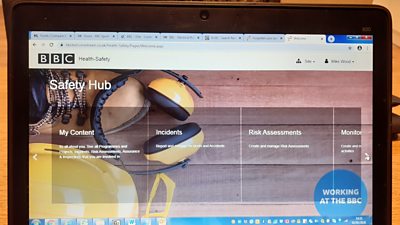
Electrical risk assessments and reporting of incidents
This section will help those who need to do a risk assessment where electricity is being used. It also gives guidance on reporting requirements for any electrically-related incident. -

Electrical safety in 91�ȱ� Premises
General guidance on use of electricity and electrical equipment when working in 91�ȱ� Premises. -

Electrical safety in Studios
A straightforward guide to electrical safety management in studios and similar locations. -

Safety of electrical equipment and appliances
Requirements for electrical safety of electrical equipment and appliances (‘PAT testing’). -
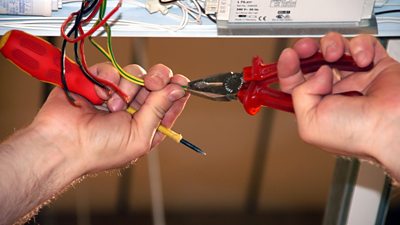
Electrical competency and Part P requirements
Guidance on what to look for when employing contractors or freelancers to do electrical work. -
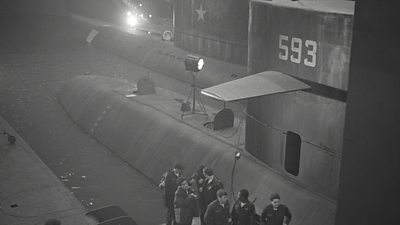
Electrical safety requirements for Production Managers
Find out what you should know and what measures should be put in place for your production. -

Bringing your own equipment to work and contributor’s equipment
Basic guidance on the safe and appropriate use of personal electrical equipment whilst at work and requirements. -
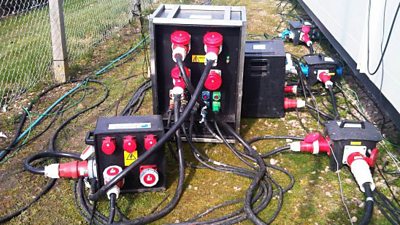
Temporary electrical systems and BS 7909
Requirements for electrical safety management in accordance with BS 7909 for all temporary electrical systems. -

Small and Simple Temporary Electrical Systems
Guidance to help understand the requirements for simple temporary electrical systems such as interviews or photo shoots for example. -
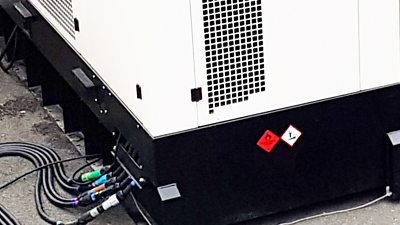
Generators
Guidance on the use of temporary generators including the application of earth electrodes. -
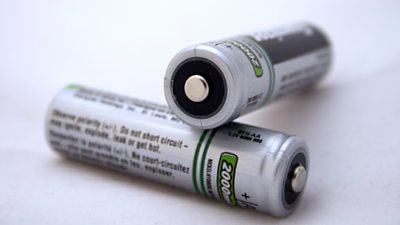
Batteries
Guidance on the safe use and storage of batteries. -
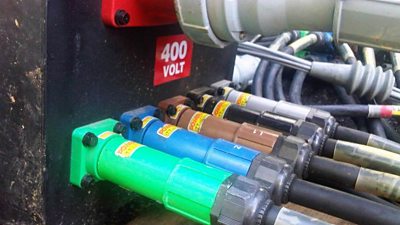
Certificate in Temporary Electrical Systems
An electrical safety training course designed to ensure those working with electricity in temporary distribution systems on productions can comply with BS 7909 and the relevant parts of BS 7671. -
 Electrical Principles Workshop to harmonise the approach to health and safety management on electricity across all areas.
Electrical Principles Workshop to harmonise the approach to health and safety management on electricity across all areas. -

External information and guidance on electrical safety
Links providing further information on all aspects of electrical safety, from external bodies (IET, HSE, Etc.) that 91�ȱ� staff may find useful. Some guidance is required to be purchased. -

Health & safety Alerts and News
All the Health & Safety Alerts and News from the H&S Teams
More from SSR
-
Your platform to record accidents, risk assessments, assurance monitoring and inspections
-
Safety Equipment Stores
Just one number to call: 020 3614 5155 -
91�ȱ� Safety Guidelines
An A-Z of 91�ȱ�'s Health and Safety Guidelines -
Safety Advice Line: 0370 411 0464 Email: safety@bbc.co.uk
Events guidance - key links:
- Exhibitions
- General Guidance
- Indoor Location Recce Checklist
- Outdoor Location Recce Checklist
- Major Incidents & Emergency Planning
- Marketing and Promotional
- Noise Exposure
- Planning and Management
- Responsibilities
- Responsibilities Form
- Laser Lighting Effects
- Strobe Lighting
- Temporary Stages and Rostra
Health topics - key links:
- (91�ȱ� network only)
- Contributors Fitness to Participate
- Display Screen Equipment (DSE)
- (91�ȱ� network only)
- First Aid and Welfare on Location
- International Travel - Risks & Health
- Manual Handling
- Mental Health: 91�ȱ�page
- (91�ȱ� network only)
- Personal Health and Wellbeing
- Pregnancy
- Psychological Trauma Support & Trauma Risk Management (TRiM)
- Tiredness and Fatigue
- Travel Health Contacts
91�ȱ� High Risk - key links:
- CBRN and Industrial Spills
- Covert Filming
- Crisis Management and Security Support
- Demonstrations, Protests and Crowds
- Disaster Coverage
- Door Stepping
- (91�ȱ� network only)
- (91�ȱ� network only)
- Public Order
- Safety Equipment Stores
91�ȱ� Journalism - key links:
91�ȱ� Productions - key links:
- Aerial Filming and Airfields
- Animals: Displaying and handling for performance
- Boats: Working on
- Children and Young People
- Driving
- Electrical Equipment and Systems
- First Aid and Welfare on Location
- Food Safety (Cooking and Catering)
- Remote Location Working
- Roads and Streets: Working by
- Security of Productions on Location
- Stunts
- Tiredness and Fatigue
- Unmanned Aerial Systems (UAS aka Drones)
- Vehicles: Recording in, from and around
- Working at Height: Mobile Elevating Work Platforms
- Working at Height: Tower Scaffolds
91�ȱ� Radio - key links:
- (91�ȱ� Network only)
91�ȱ� Security - key links:
91�ȱ� Sport - key links:
About this site
This site describes what the 91�ȱ� does in relation to managing its health, safety and security risks and is intended for those who work directly for the 91�ȱ�.
It is not intended to provide instruction or guidance on how third parties should manage their risks. The 91�ȱ� cannot be held liable for how this information is interpreted or used by third parties, nor provide any assurance that adopting it would provide any measure of legal compliance. More information
Some links on this site are only accessible when connected to the 91�ȱ� network
